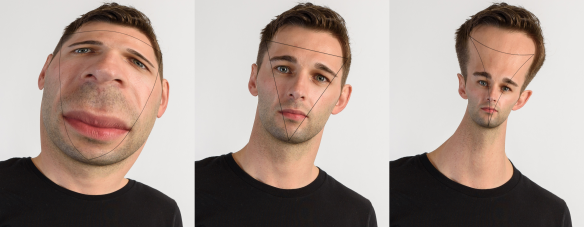By Enrico Barausse, Richard Pires Brito, Vitor Cardoso, Irina Dvorkin, and Paolo Pani
Black holes predicted by Einstein are, well, black. In classical physics, nothing can escape their event horizon, not light, not matter, and neither gravitational waves.
There is a deep reason for this absolute blackness. If the event horizon were not a perfectly absorbing surface, but rather a partially reflective one, spinning black holes would become unstable and would shed most of their rotational energy into gravitational waves. This process is known as superradiant instability [1], and is tightly linked to the presence of an ergoregion, a region of spacetime just outside the event horizon, where modes of negative energy are allowed to exist. Negative energy-modes can form in the ergoregion of normal humdrum black holes, but are eventually doomed to fall in the event horizon.

Enrico Barausse

Richard Pires Brito

Professor Vitor Cardoso

Irina Dvorkin

Paolo Pani
If (what look like) black objects had a surface, such modes would be partially reflected by it, and they would bounce back and forth between the horizon and the boundary of the ergoregion (which they cannot cross, since negative energy modes cannot travel to infinity). Each time they reach the ergoregion boundary, they come out as positive energy-modes, thus inside the ergoregion they would keep growing in amplitude (i.e. their energy would keep decreasing and becoming more negative) eventually producing an instability. Indeed, these ‘bounces’ produce ‘echoes’ in the gravitational wave signal [2] from the remnant black hole forming from binary mergers, and there are claims [3] (albeit controversial [4]) that they may have been seen in the LIGO data.
In this paper we do not look at the black holes that form from binary mergers, but rather at isolated ones. These black holes can have a wide range of masses (from stellar masses for stellar-origin black holes up to millions or billions solar masses for supermassive black holes) and a variety of spins (on which we have some knowledge thanks to electromagnetic observations). Normally, isolated black holes do not emit gravitational waves, but if their event horizon had some reflectivity (that is, if these objects were not totally black), they would turn into black-hole bombs due to superradiance, and they would shed almost all their angular momentum in gravitational waves. These gravitational wave signals would be too weak to be detected singularly, but because there are in general many more black holes in isolation than in binaries, they can produce a very large stochastic background. Indeed, this background would be orders of magnitude larger than the current upper bounds from LIGO/Virgo. Similar results also apply to supermassive black holes, in the yet-unexplored LISA band.
So in conclusion, the existing stochastic background constraints from LIGO and Virgo show that black holes are very black, although some shades of grey may still be allowed. Indeed, while 100% reflection from the horizon is ruled out, smaller reflection coefficients may still be possible depending on the spin of the object [5].
References:
[1] W. H. Press and S. A. Teukolsky, “Floating Orbits, Superradiant Scattering and the Black-hole Bomb“. Nature. 238 (5361): 211-212 (1972);
Brito, Cardoso, Pani; “Superradiance“, Springer (2015)
[2] Cardoso, Franzin, Pani, “Is the gravitational-wave ringdown a probe of the event horizon?“, Phys. Rev. Lett. 116, 171101 (2016)
[3] Abedi & Afshordi, “Echoes from the Abyss: Tentative evidence for Planck-scale structure at black hole horizons“, Phys. Rev. D 96, 082004 (2017)
[4] Ashton+ https://arxiv.org/abs/1612.05625; Abedi, Dykaar, Afshordi, https://arxiv.org/abs/1701.03485 and https://arxiv.org/abs/1803.08565;
Westerweck+, “Low significance of evidence for black hole echoes in gravitational wave data“, Phys. Rev. D 97, 124037 (2018)
[5] Maggio, Pani, Ferrari “Exotic Compact Objects and How to Quench their Ergoregion Instability“, Phys. Rev. D 96, 104047 (2017); Maggio, Cardoso, Dolan, Pani, http://arxiv.org/abs/arXiv:1807.08840
Read the full article in Classical and Quantum Gravity:
The stochastic gravitational-wave background in the absence of horizons
Enrico Barausse et al 2018 Class. Quantum Grav. 35 20LT01
Sign up to follow CQG+ by entering your email address in the ‘follow’ box at the foot of this page for instant notification of new entries.
CQG papers are selected for promotion based on the content of the referee reports. The papers you read about on CQG+ have been rated ‘high quality’ by your peers.
This work is licensed under a Creative Commons Attribution 3.0 Unported License.
Tell your friends about CQG+





















You must be logged in to post a comment.